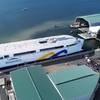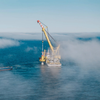A joint study by UK P&I Club and Solis Marine Consultants found ‘human error’ and the breakdown of communications on the bridge is a major contributing factor in claims. Stuart Edmonston, Loss Prevention Director at UK P&I Club, and Captain John Simpson, Director at Solis Marine, examine the issues raised and highlight the relevant actions to take to reduce the risk of accidents.
“Despite the falling cost of claims resulting from human error, good communication between masters and their bridge teams during pilot operations remains critical to avoid unnecessary accidents.
“Even with the development of on-board sailing directions and port guides, together with what may have been provided by the local agent, there will still be areas where further detail is required by the bridge team. A master can be familiar with a port after frequent visits, but there will be many aspects that can only be properly completed when the pilot actually boards. That is the opportunity for the master to seek the information and advice that will fill in the missing gaps for the transit, manoeuvre, berth and tugs.
The bridge team must ensure that they know the following:
- The transit to and from the berth, including the route agreed, speed and timing, local traffic regulations and emergency anchorage areas
- Details of the tugs used, including their type and power, time of arrival, and whether the ship’s or the tug’s line is to be used
- Information on the berth, such as limitations on vessel size, turning areas, mooring plans, and berthing speed limits
“With the pilot onboard, the master and bridge team should confirm arrangements and ensure that they are satisfied with the planned transit and berthing/unberthing manoeuvre. This is the best opportunity to talk to the pilot and to clarify any issues that have been identified during the preparation of the onboard plan. The co-operation of the master and bridge team includes confirmation of the language to be used throughout, so that helm and engine orders can be quickly and properly acknowledged and carried out.
“It is important that both the master and pilot are clear about the status of the vessel and the planned passage. However competent the pilot is, the bridge team must monitor the progress of the vessel on the chart or ECDIS. A pilot should never mind being asked questions about the position of the vessel in the channel or unexpected depth soundings. It cannot be assumed that the pilot knows everything, but the more information is exchanged, the more effectively the transit and manoeuvre will be carried out.
“During the master pilot exchange, the priority should be to ensure efficient and timely communication to embark on a safe passage, and not the overloading of the bridge team and pilot with unnecessary information and questions.”










